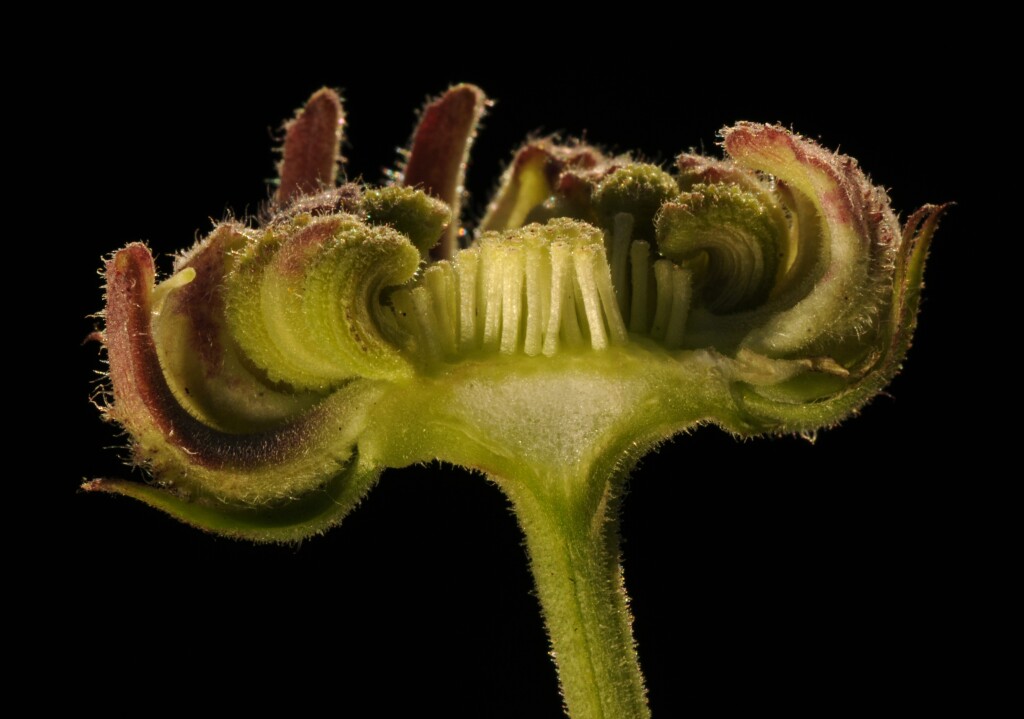Calendula
Annual or perennial herbs or subshrubs, often glandular and aromatic. Leaves entire or variously lobed, sessile, alternate. Capitula heterogamous, radiate, usually solitary, pedunculate; involucral bracts in 1 or 2 rows, herbaceous with scarious margins, conspicuously hairy (in Victoria). Ray florets female, yellow or orange; disc florets functionally male, 5-lobed, yellow-red or brownish; anthers tailed; style undivided, the apex acute, conical and surrounded by a ring of short hairs. Cypselas polymorphic, the outer ones cymbiform, somewhat curved, rostrate or triquetrous, the inner ones distinctly curved and sometimes winged, sometimes grub-shaped, all cypselas rugose or variably tuberculate on the dorsal surface; pappus absent.
About 15 species, from northern Africa, the Mediterranean region and southern and central Europe; 3 species naturalised in Australia.
Short, P.S. (1999). Calendula. In: Walsh, N.G.; Entwisle, T.J., Flora of Victoria Vol. 4, Cornaceae to Asteraceae, pp. 832–833. Inkata Press, Melbourne.
 Spinning
Spinning


